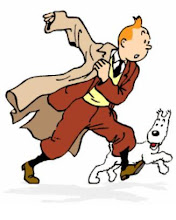
Warning!!! The following blog contains information that may spoil the plot line of the new Clint Eastwood film Changeling. If you have not seen the film yet and don’t want the plot unravelled I would advise you NOT to read this post.
Fact or Fiction, is Hollywood capable of telling a
true story on the silver screen?
It’s not often I come away from a film knowing that I have just experienced a piece of real cinematic drama.
Changeling, directed by Clint Eastwood is based on a true story and easily stands out from other big budget blockbusters that regularly flow from Hollywood.
Set in the romantic era of 1920’s U.S prosperity. America was undergoing rapid urbanisation following on from continued industrialisation. Largely untouched from the catastrophic effects of the First World War that tore much of Europe apart, the devastating Wall Street crash hadn’t taken place and an economic depression and Second World War were distant nightmares.
The story is set around single mother Christine Collins (played by Angelina Jolie). Jolie delivers a powerful display as she returns from work to the realisation that her son, Walter Collin’s, is missing.
The police are alerted but don’t take her concerns seriously. When a boy matching the descriptions of her son is found by the LAPD, the concerned mother realises that the child is not hers.
Again the police force fail to take her claims seriously, insisting her son has been found and that the child is hers and eventually having Christine Collin’s committed to psychiatric care.
From this point the story plunges into dark details of the
Wineville chicken coop murders that took place outside Los Angeles in 1928. Children walking the streets were snatched by ranch owner, Gordon Northcott and caged in chicken pens before being brutally murdered by their captor.
The reality has never been confirmed but it’s believed that Walter Collin’s was one of the victims of the brutal serial murders that shook the state of California.
When the new evidence is brought to the attention of the Los Angeles police, it proves Christine Collins is right, that the child found was an imposter (Arthur Hutchins) and that her son was still missing.
The discovery of the murders and Christine Collins testimony blows open the LAPDs corruption and mistakes that eventually lead to Captain J.J Jones and chief of police, James E. Davies being dismissed from their positions in court.
Both Clint Eastwood and Producer Ron Howard deliver a rollercoaster of emotions that can’t fail to move the viewer.
Christine Collins plight to find her son moved me so much I came away knowing I had to find out more about the story and her search.
Eastwood does stay true to reality but slightly bends the outer edges allowing the viewer to cling to hope in a story depicting desperation and despair.
As shown in the film Collins never does find her son, nor the true fact of what happened to him. Walter Collins body was never discovered, it’s believed Christine Collins never stopped looking for her son. However records of Mrs Collins, apparently, only go as far as 1941, no information can be found on her past this date.
The more sour details of this true story are that Collins never received the money awarded to her in court after she brought a law suit against the LAPD for neglect and mistreatment.
As for the two characters behind the corruption in the police department, J.J. Jones and James E. Davies were both reinstated into their positions two years after being dismissed.
Shocking true life twists, absent from the film that you hope would not happen today.
Why does Eastwood leave these details out?
Its obvious Hollywood can never tell any story completely true to life, any happy ending is always overblown and any ending is made to look happy.
However, in defence I would like to believe it’s more due to that fact that Eastwood thought Christine Collins had suffered enough and that people viewing this film needed to take some, even a small piece of hope away from this story.
Leaving out these details lets the viewer walk away with the satisfaction Collins was victorious in her battle to rid a police force of corruption.
The sad facts are that this wasn’t the reality.
***
Image courtesy @ http://thecia.com.au/reviews/c/images/changeling-2.jpg










